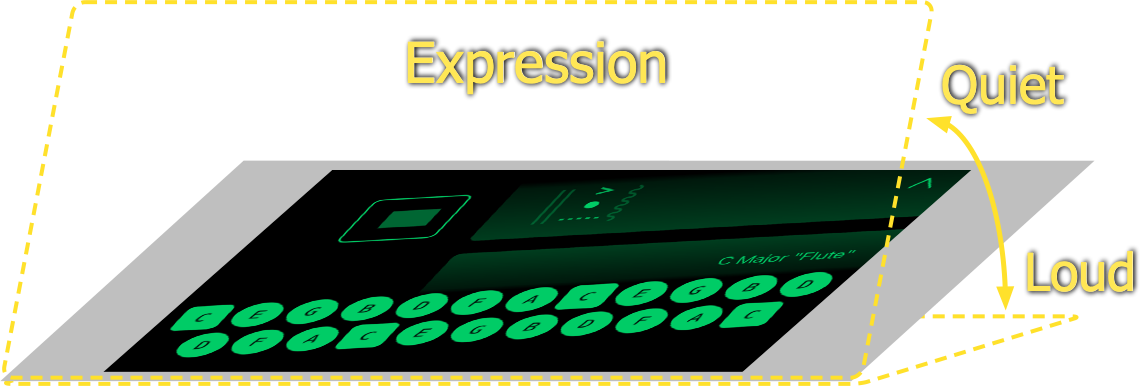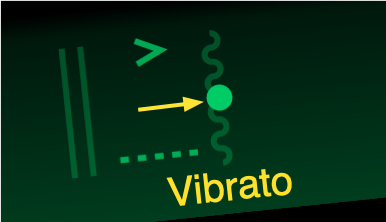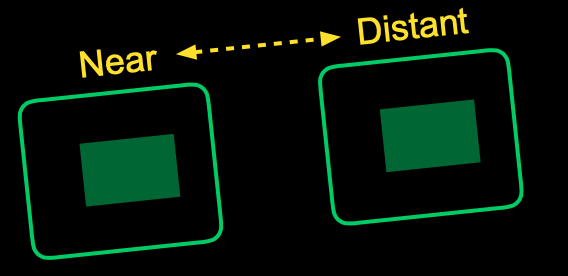Utilities Screen
Utilities screen allows you to adjust various sound effects, special features and appearances.
Tip: On this screen, the main screen responds as usual, so you can make adjustments while actually checking the degree of each effect.
This chapter includes the following sections:
- Attenuation
- Expression
- Reverb
- Vibrato
- Airy Noise
- Auto Legato
- Color Palette
- Controller Location
- Controller Size
Attenuation
"Attenuation" selector attenuates the instrument's sound by the selected amount (in decibels) without affecting the device's volume setting.
Expression
Expression function allows you to change the volume by tilting the device.
"Expression" selector lets you select how the effect changes depending on the tilt of the device.

| Selector | Degree of Change |
|---|---|
| No volume change occurs. | |
| The volume reduces linearly according to the tilt angle. | |
| The volume drops in areas where the tilt angle is large. | |
Reverb
"Reverb" slider changes amount of the reverb effect to the sound.
You can bypass the reverb effect moving the slider to the left end.
Vibrato
When you move your finger on the sound controller from the home area to the right, the vibrato effect gradually appears, and the effect becomes stronger as you move your finger to the right.

"Vibrato" slider allows you to adjust the vibrato cycle (speed).
Airy Noise
"Airy Noise" slider adjusts the amount of airy noise that is often found when playing wind instruments.
If you want no airy noise, move the slider to the left end.
Auto Legato
"Auto Legato" switch allows you to select how the performance board responds to your touch.
- "OFF"
Each touch is independent and can produce a different sound.
This allows for ensemble playing. - "ON"
Only one sound can be produced at any time, and the later touch always takes priority (if the later touch is released before the earlier touch, it will revert to the earlier touch).
This allows for smooth legato even when playing jumping between distant buttons.
Color Palette
Tapping the "Color Palette" button ![]() will display a color palette dialog where you can select and change the drawing color of the main screen.
will display a color palette dialog where you can select and change the drawing color of the main screen.

- You can change the hue, brightness, and saturation of the palette using the color wheel on the right and the color grid on the left.
- Tapping the color selector at the bottom will change the palette to show the colors stored there.
- The leftmost selector is the default color (sea green).
- If you select and long press any of the four color selectors on the right, a confirmation dialog will appear and you can save the palette color there.
- If you want to use the palette color as the drawing color on the main screen, tap "OK." If not, tap "Cancel" to close the dialog.
Controller Location
You can adjust the sound controller to a location that is easy to play.

Tapping ![]() or
or ![]() moves the controller left or right.
moves the controller left or right.
The number indicates the current location (1: closest, 10: farthest).
Controller Size
You can adjust the size of the sound controller to make it easier to play.

"Size" selector allows you to choose between large, medium, and small controller sizes.